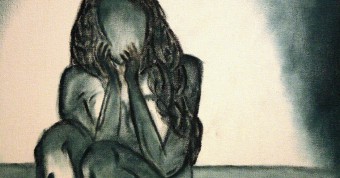It was a time when lions reigned supreme, generic disease was rampant and life hung by a thread. Yet hundreds of Goans made their way to Africa to help build the continent’s first railway, try leaving behind their serene land for the hope of better money in the wild plains of Kenya.
Now the souls of 170 Goan pioneers are ‘reaching out’ to their kin from beyond their unclaimed graves in a Nairobi cemetery – with a little help from a Kenya-based grave enthusiast, decease an elderly Goan author and, until his death last February, a British historian who discovered the tombs.
Now the grave enthusiast, Robert Barnes, and the octogenarian, Mervyn Maciel, are on a quest to find living kin of these Goans who perished while helping to build the Kenya-Uganda railway.
Gravestones with surnames like D’Souza, Ribeyro and Santos are laid alongside employees and tracklayers of the railway, as well as some luminous Europeans who had moved to Kenya, like GWL Caine, who first brought tea to the east African country from Sri Lanka.
Buried alongside Caine is the lion-hunter Charles Ryall, whose killing by a man-eater inspired the book ‘Man Eaters of Tsavo’ and the Michael Douglas-starring Hollywood blockbuster ‘The Ghost and The Darkness’.
I first stumbled upon Mervyn’s ghostly quest through his post on ‘Goanet’, a popular online mailing list, scouting for descendants of the Goans buried at the 109-year-old Nairobi South Cemetery.
The percentage of Goan graves was astonishing.
“Of the 840 Christian graves, 170 are those of Goans. Many of these I gather are of young children though others could well include some early pioneers,” Mervyn told Streets.
Mervyn, 83, who was born in Kenya, says that early migration of Goans to Kenya began in the late 19th century, when construction of the railway required skilled labour.
London-based Goan writer Selma Carvalho, who is researching migration in the Goan diaspora and has authored several articles on the subject, said many of the Goans worked as clerks or skilled craftsmen and were often moderately educated.
In the end, they were cogs in the British system furthering colonial ambitions in Africa.
“At least initially, the railway proved to be a bad investment, and the colonisation of Kenya by the British was in part to make the railway financially viable,” Carvalho explains.
So who were these pioneers, whose remains lay buried under chipped and weathered gravestones under the burning African sun?
Only a handful of the graves are identified. A tall gravestone bearing a British royal emblem shows where J. A. Ribeyro, a conductor, finally rested on April 22, 1918. All we know about Alzira Blanche Santos is that she died on June 5, 1920. Another tombstone hints at the woe Mr. & Mrs. J. D’Souza must have suffered when their son Felix died 22 days after his birth in 1917.
Robert Barnes runs a volunteer website, www.eamemorials.co.uk that helps descendants trace the graves of their ancestors in what was once British-held East Africa. He says that the Ribeyro, Santos, D’Souza graves are among the lucky few which could be identified.
“Not so many Goan graves have headstones,” he says. And about the quest to find living kin? “As far as I know, there are no leads as to their descendants and this is why I had put out a piece on Goanet and also Goan Voice (a website popular with expat Goans) earlier to see if anyone could come up with any answers. Sadly, no response to date,” Mervyn says.
In course of the search, one member of the trio, Monty Brown – who first discovered the Goan graves in 2010 while weeding the cemetery – died in February this year.
While weeding the cemetery, Brown came across the Portuguese-sounding names and, after some digging of his own that included scouring the cemetery’s official records, discovered they were Goan.
Before his death, Monty wrote an article ‘Nairobi South Cemetery – A historical survey,’ which pointed out that among the cemetery’s distinctions is that it holds the most number of men killed by lions: Six.
Still, lions were far from the biggest cause of death in Africa at the time. Diseases like pneumonia, bubonic plague and malaria claimed many lives at the railway construction sites in Kenya. And occupancy in cemeteries like this one often swelled.
According to Monty’s article, the cemetery and its records are a rich repository of history. “Nairobi South Cemetery deserves recognition as a point of considerable interest in the fascinating country of Kenya. As one wanders round the cemetery, many other familiar names appear, many with a significant contribution to Kenya’s early development,” Monty wrote.
These Goans played their part, great and small, in Kenya’s pioneering days. Because of the trio’s work, they’re at last getting a little recognition, even if their descendants remain unknown.




